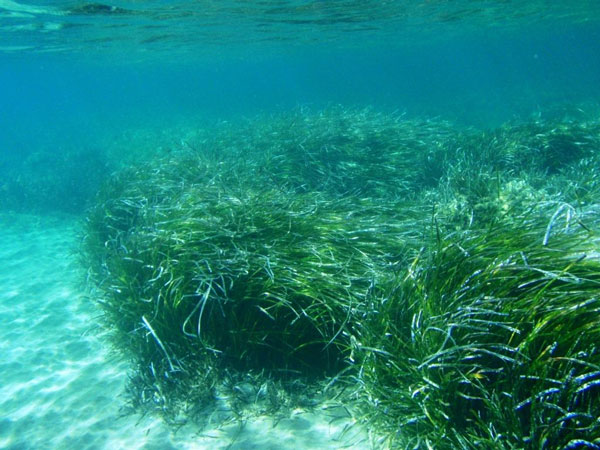Discovering the longest living grass in the planet
Scientists estimate that a Mediterranean sea grass species has existed for more than 100,000 years, the age at which no multicellular life form on Earth has been achieved.
Sophie Arnaud-Haond, a scientist from the French Research Institute, and her colleagues sampled from 40 seagrass beds Posidonia oceanica on an area up to 3,500km long. They found that the genetic structure of the grass samples was identical and calculated that they existed for more than 100,000 years, Livescience reported.
"Posidonia oceanica grass is one of the largest age organisms on the planet," Arnaud-Haond said.

Sea grass Posidonia oceanica may have lived more than 100,000 years on the bottom of the Mediterranean sea.
The team thinks that Posidonia oceanica reproduces with both methods: sexual and asexual.
'That means they can reproduce by combining genes of both male and female individuals, or cloning the genome of an individual to create new plants,' Sophie explained.
The genome of asexual reproductive organism is reproduced intact over many generations, so they remain unchanged after thousands of years.
If the prediction of the age of Posidonia oceanica is proven to be true, they will top the list of the longest-lived multicellular life forms on Earth. Currently multicellular organisms live the longest as a species on Australia's Tasmanian island. It has existed for more than 43,000 years thanks to asexual reproduction method.
One theory is that cloning cannot take place forever because small mutations in the replication process will accumulate in genes over time.
'Most mutations will cause negative effects. After degeneration occurs in certain generations, the creature will disappear. So the age of clones is also limited , 'the doctor said.
But the existence of the grass samples Posidonia oceanica caused many scientists to doubt the hypothesis about the age limit of asexual reproductive organisms.
"We can demonstrate by model that Posidonia oceanica has a certain asexual reproduction mechanism that helps them avoid bad mutations ," Arnaud-Haond said.
- Discovering the planet has never been long before
- Video: Ghost grass 'devour' the desert house
- Discover the longest living clam
- The grass may be the noodle Thach Sanh that absorbs CO2
- Coral is the longest living animal on Earth
- The oldest living creatures still exist on Earth
- This strange pipe worm may be the longest living animal in the world
- The Japanese government set a specific criteria for eating for people and they are the longest living people in the world
- Anti-flood grass was born
- Discover the stunned red urchin, living the longest on Earth
- Discover the world's longest living animals
- Humans have not yet reached the maximum age that should have been enjoyed
 Why do potatoes have eyes?
Why do potatoes have eyes? 'Tragedy' the world's largest carnivorous life: Death becomes ... public toilet
'Tragedy' the world's largest carnivorous life: Death becomes ... public toilet Tomatoes were once considered 'poisonous' for 200 years
Tomatoes were once considered 'poisonous' for 200 years Detecting microscopic parasites on human face
Detecting microscopic parasites on human face